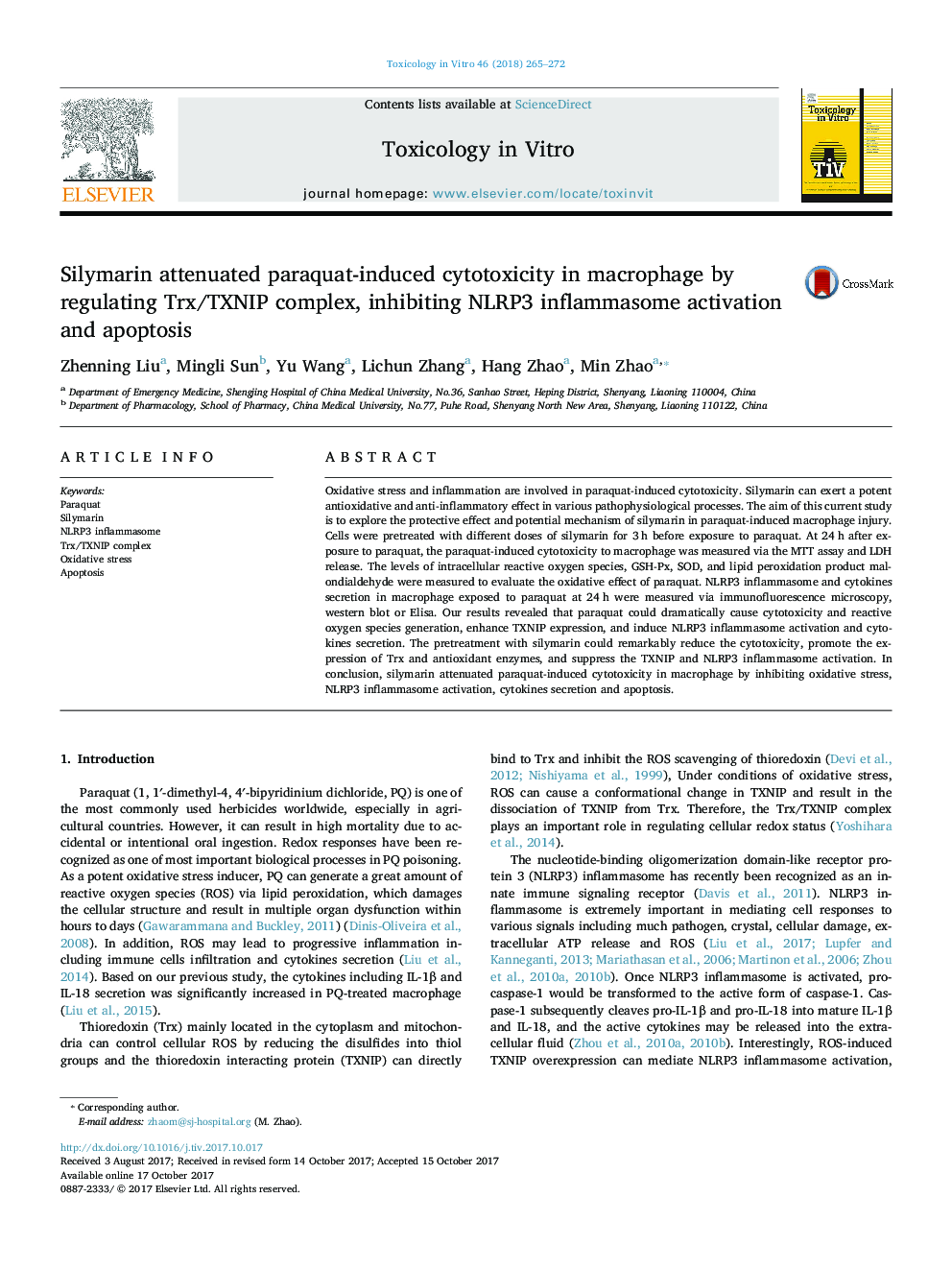| Article ID | Journal | Published Year | Pages | File Type |
|---|---|---|---|---|
| 8554121 | Toxicology in Vitro | 2018 | 8 Pages |
Abstract
Oxidative stress and inflammation are involved in paraquat-induced cytotoxicity. Silymarin can exert a potent antioxidative and anti-inflammatory effect in various pathophysiological processes. The aim of this current study is to explore the protective effect and potential mechanism of silymarin in paraquat-induced macrophage injury. Cells were pretreated with different doses of silymarin for 3Â h before exposure to paraquat. At 24Â h after exposure to paraquat, the paraquat-induced cytotoxicity to macrophage was measured via the MTT assay and LDH release. The levels of intracellular reactive oxygen species, GSH-Px, SOD, and lipid peroxidation product malondialdehyde were measured to evaluate the oxidative effect of paraquat. NLRP3 inflammasome and cytokines secretion in macrophage exposed to paraquat at 24Â h were measured via immunofluorescence microscopy, western blot or Elisa. Our results revealed that paraquat could dramatically cause cytotoxicity and reactive oxygen species generation, enhance TXNIP expression, and induce NLRP3 inflammasome activation and cytokines secretion. The pretreatment with silymarin could remarkably reduce the cytotoxicity, promote the expression of Trx and antioxidant enzymes, and suppress the TXNIP and NLRP3 inflammasome activation. In conclusion, silymarin attenuated paraquat-induced cytotoxicity in macrophage by inhibiting oxidative stress, NLRP3 inflammasome activation, cytokines secretion and apoptosis.
Related Topics
Life Sciences
Environmental Science
Health, Toxicology and Mutagenesis
Authors
Zhenning Liu, Mingli Sun, Yu Wang, Lichun Zhang, Hang Zhao, Min Zhao,
